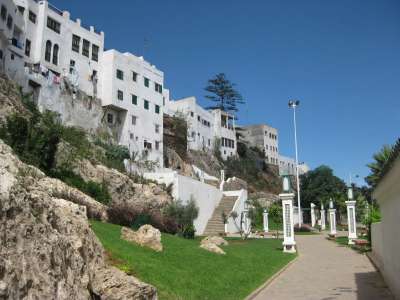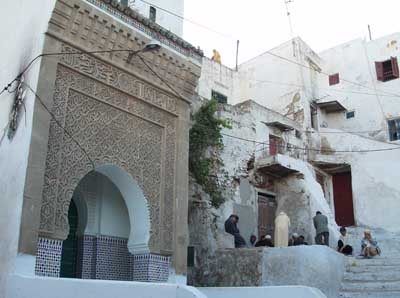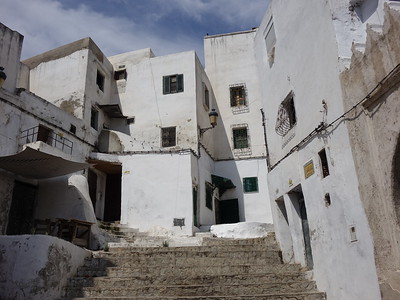Historic City of Meknes

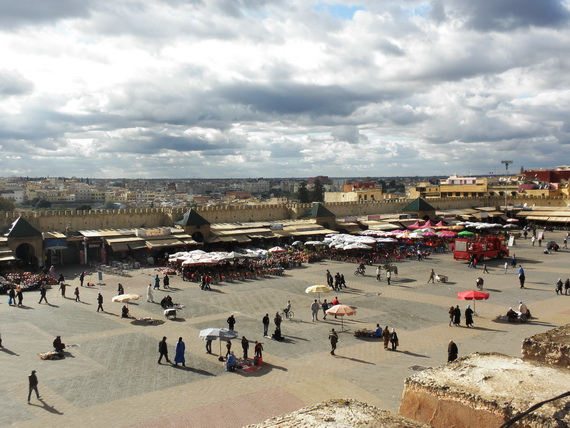
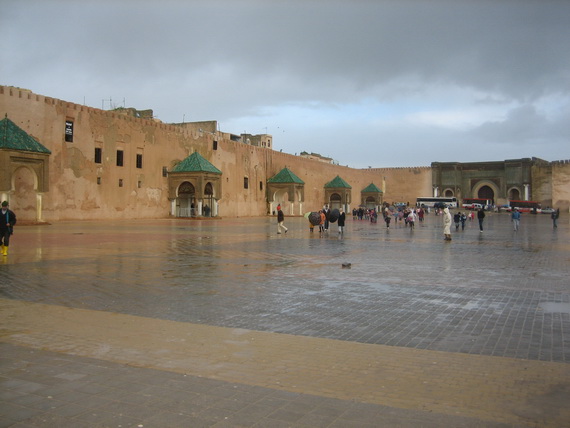
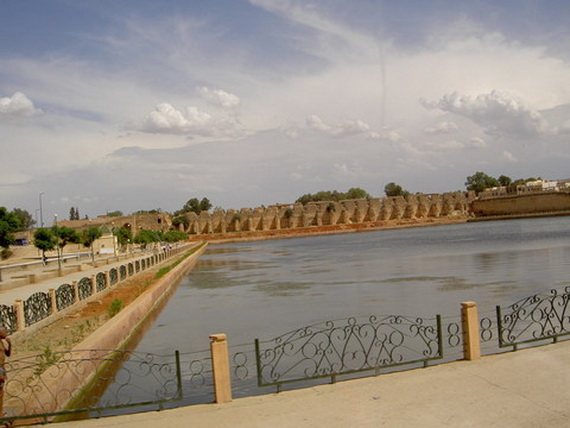
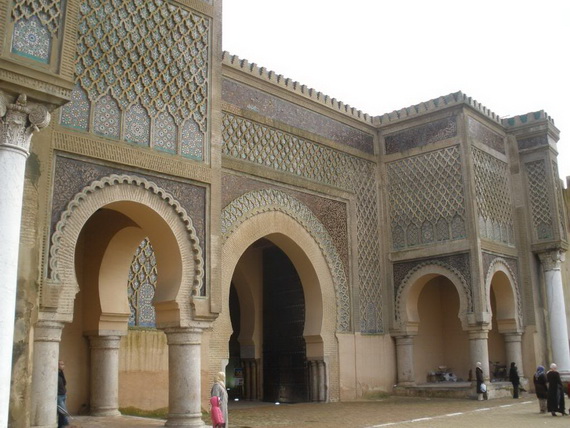
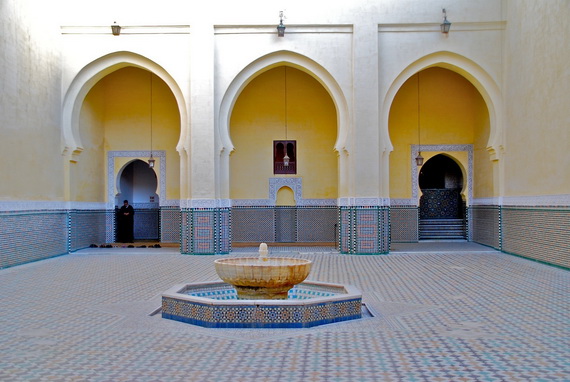
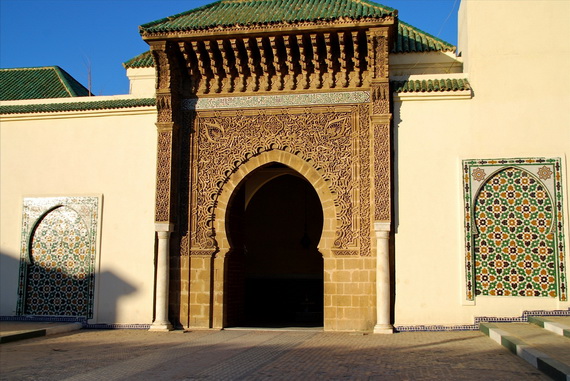

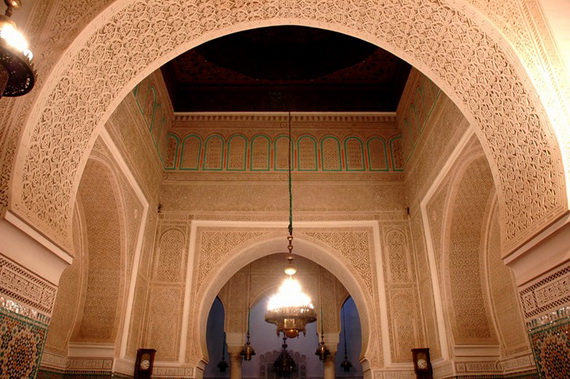
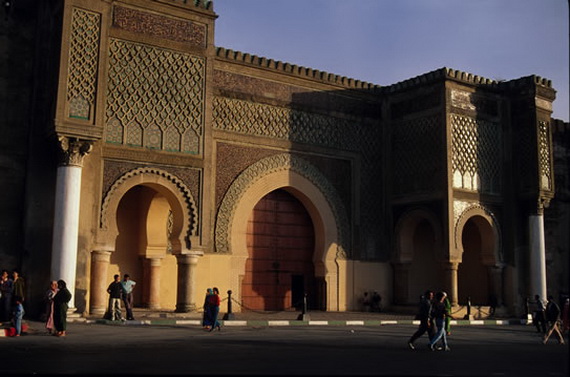
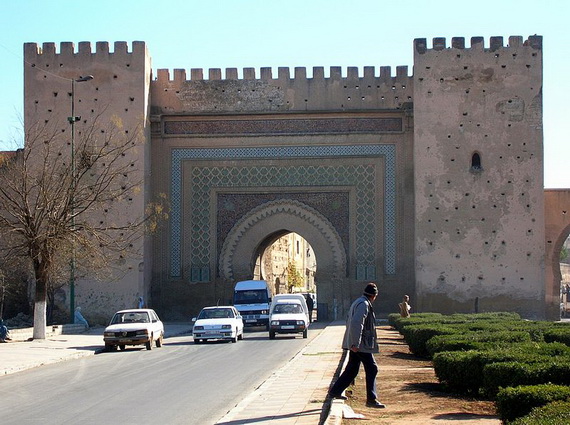
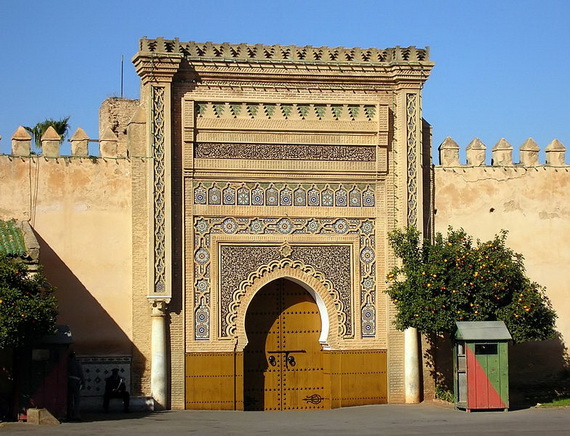
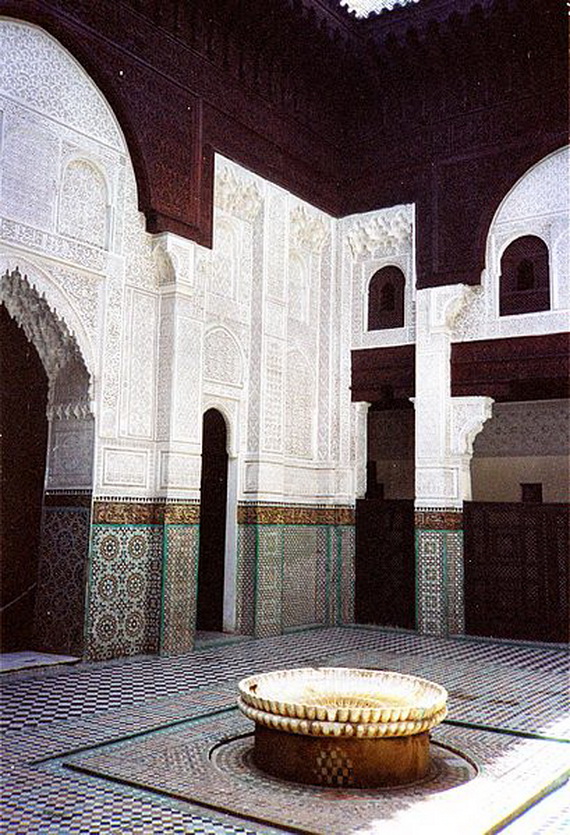
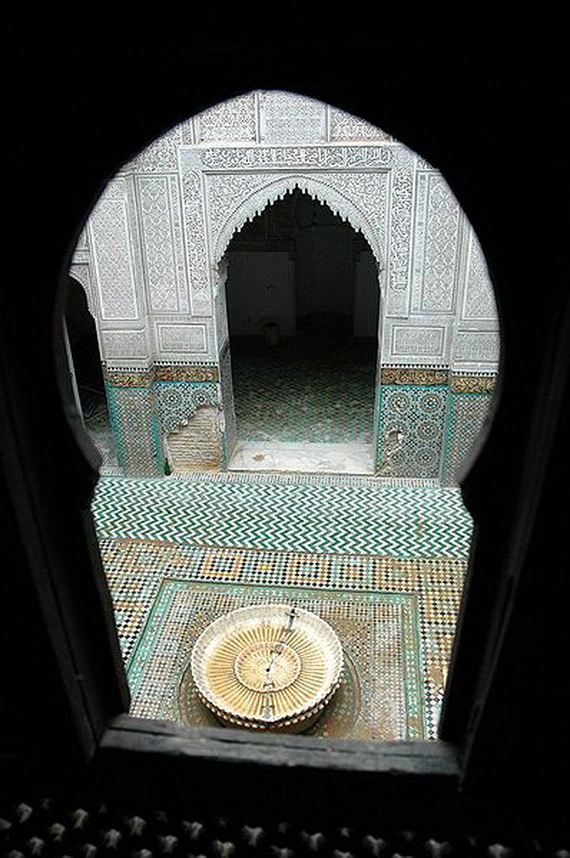
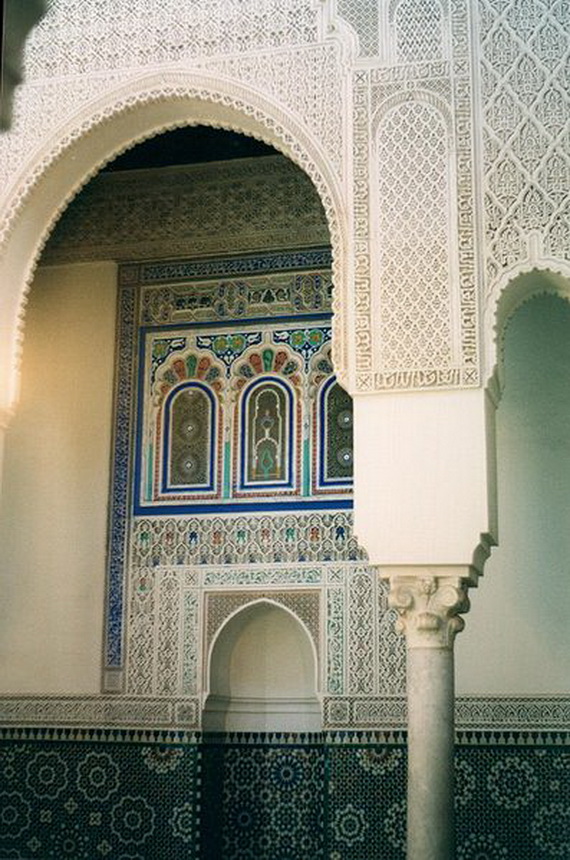
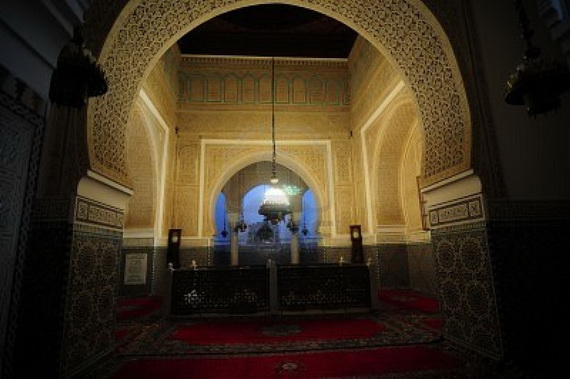




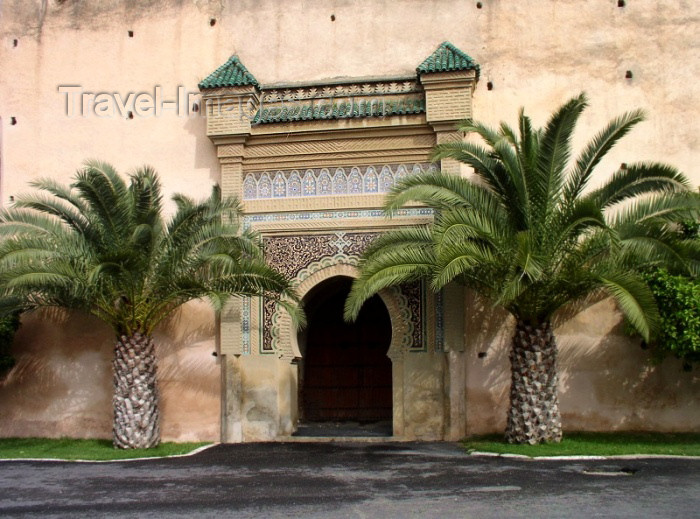








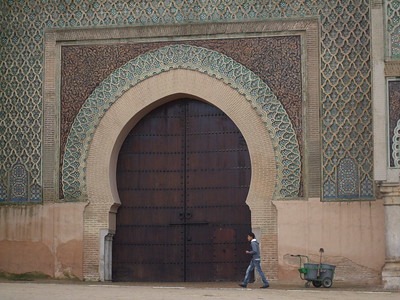
Founded in the eleventh century by the Almoravids as a military settlement, Meknes became a capital under Sultan Moulay Ismail (1672-1727), founder of the Alawite dynasty. He made an impressive city in Moorish style, surrounded by high walls pierced by monumental gateways that shows today the harmonious blending of Islamic and European styles in the seventeenth century Maghreb.
Brief summary
The historic city of Meknes has exerted considerable influence on the development of civil and military architecture (the Casbah) and structures. Founded in 1061 AD by the Almoravids as a military, it takes its name from the great Berber tribe Meknassa, which dominated the eastern Morocco Tafilalet until the eighth century. It enjoys a remarkably well situated in the plain of Saïss, between the Middle Atlas and Rif mountain of pre-Zerhoun. It contains the remains of the medina which reflect the socio-economic fabric and the former imperial city created by the Sultan Moulay Ismail (1672-1727). It is the presence today of this historic city containing the remains rare and important monuments in the midst of a changing urban space, which gives this city its universal heritage. The two sets are surrounded by a series of walls which dissociate from each other. In addition to its architectural interest of Hispano-Moorish style, Meknes is particularly important because it is the first great work of the Alawite dynasty, reflecting the grandeur of its designer. It also offers a remarkable urban design approach incorporating elements of both the architecture and urbanism of the Islamic and European.
Sheltered by high defensive walls, pierced by nine gates, are of key monuments, of which twenty-five mosques, hammams ten, palaces, vast granaries, the remains of fondouks (hotels merchants) and private homes, testimony periods Almoravid Merinid and Alawite.
Criterion (iv): Meknes is characterized by the appearance of large and gigantic ramparts whose height reaches 15 m. It is considered an exemplary witness of the fortified cities of the Maghreb. This is a good representative of a remarkably complete urban structure and architecture of a North African city of the seventeenth century, seamlessly combining elements of design and planning of Islamic and European. With a princely urban planning, the historic city of Meknes also illustrates the architecture specifics of soil (clay) urban sub-Saharan Maghreb.
Integrity (2009)
The Medina and the Kasbah are two sets fortified by ramparts towering who shall ensure its protection. They contain all the elements that reflect the property's Outstanding Universal Value (fortifications, urban, architecture, land, buildings, military and worship, gardens). The medina is a compact and overcrowded while the Kasbah contains large open areas. The imperial city of Medina stands by its long corridors between high walls of the blind, the dark maze of Dar el-Kbira, the richness of Qasr el-Mhansha, extent of gardens and robustness of the towers and bastions.
Although some key attributes of the city and former imperial capital, reflecting the outstanding universal value are well preserved, others need of conservation measures. In general, urban structure and characteristics of the urban fabric of Meknes became vulnerable as a result of rapid and uncontrolled development in part, as the surrounding buffer zone.
Authenticity (2009)
Meknes attributes that reflect his concern for Outstanding Universal Value of the monuments and all part of the urban fabric of the city that illustrate shape of the seventeenth century. Some buildings have become very vulnerable as a result of inappropriate renovations or reconstructions and the urban fabric is also weakened by the erosion of the details. In general, the ability of many to express its outstanding universal value needs to be strengthened because some attributes are already threatened.
Needs protection and management (2009)
Protection measures are essentially different laws listing of historic monuments and sites, particularly the Law 22-80 (1981) on the Conservation of Moroccan heritage. A management plan to own property is not yet available. Rehabilitation actions undertaken to date, initiated by several speakers, the result of a participatory strategy to safeguard and promote that heritage. In addition, the City Council of the city, aware of its role as a key player in the management of the property, created in 2003 within the municipality, an Historic Monuments Service responsible for overseeing and implementing rehabilitation programs of local heritage, in close collaboration with the Regional Inspectorate of Monuments and Sites (Ministry of Culture).
In order to maintain the cultural identity of the city and promote the property's Outstanding Universal Value, regular programs of urban restructuring is underway. In this connection it is worth quoting the following: the development of architectural charter and management plan of the medina, the application of a study of upgrading (restructuring of the axes and arteries, lanes and alleys, treatment and beautification of the exterior facades, consolidation of traditional masonry and flooring). It is within this framework that are part of the restoration of the walls and gates, the rehabilitation of heritage buildings (bastions, palaces, granaries, silos and fortresses), rehabilitation of historical sites and redevelopment of open spaces.
It is necessary to strengthen the institutional capacity to ensure the conservation and rehabilitation of the attributes of Outstanding Universal Value of Meknes receive the highest attention in the field of planning and decision making.
Long Description
[English only]
The Historic City of Meknes Represents year in full and Exceptionally well-preserved way the urban fabric and monumental buildings of a 17th century Maghreb capital city Combining Elements of Islamic and European design and scheduling in a Harmonious fashion. It Has exerted a considerable impact on the development of civil and military architecture (Kasbah) and works of art. It contains aussi The Remains of the royal city Founded by Sultan Moulay Ismail (1672-1727). The presence of These unusual restes Within a historic town in turn That Is Located Within a Rapidly Changing Urban Environment Gives Meknes icts universal value.
The name goes back to the Meknes Meknassa, the great Berber tribe That Dominated eastern Morocco as far back as the Tafilliet Which Produced and Moulay Idriss I, founder of the Moroccan state and the dynasty in the Idrissid 8th century AD.
The Almoravid rulers (1053-1147) made a practice of building strongholds for Storing food and arms for Their troops; This Was Introduced by Ben Youssef Tachafine, the founder of Marrakesh. Established in Meknes WAS this extended period. The Earliest To Be Settled by WAS Nejjarine Around the Mosque, an Almoravid foundation. Markets congregated around the mosque, Specializing in Firearms, woodwork and metal products. Like Other settlements of the time, Meknes Was Not fortified: walls Were not added Until The End Of The Almoravid extended period.
The Town Fell Into the hands of the Almohad dynasty (1147-1269) at the start of Their rule: it was taken by year army led by the Caliph Abd al-Mu'min in person. DURING this période It Was enlarged and urbanized. An inscription states That the Great Mosque enlarged WAS DURING the reign of Mohamed Annacer. Water from the spring Tagma WAS Brought to the town to serve as the: various fountains, baths and mosques. At That Time There Were oven sets of baths (hammam), the location of data and identify how the town Which HAD spread.
During The Subsequent Merinid période (1269-1374), Meknes Absorbed the suburbs That HAD grown up round it. Refugees from the centers in Andalusia Moorish That Fell to Christian forces, aussi Helped to swell the population, Among Them a significant Jewish community. FOLLOWING Merinid practice, Abu Yusuf built a Kasbah (the only mosque of Which Survives) outside the old town, as well as the first of the Three madrassas (Islamic schools) with the Merinid Which rulers endowed Meknes. Other public buildings from the Merinid période included mosques, Hospitals, libraries and fountains.
The founder of the Alawite dynasty, Moulay Ismail (1672-1727), made Meknes historical capital city and Carried Out Many reconstructions and additions, Such as mosques, mausolea and gardens, historical goal contribution hand Was The establishment of a new imperial city. Built in the Hispano-Moorish style, it is impressive in Both extents and construction. It is enclosed by high walls pierced by monumental gates. Within the palace are icts with Enormous stable, a military academy, vast water storage cisterns and granaries.
The high defensive walls of Meknes are pierced by the monumental gates: Bab Mansour Laalej, Lakhmis Bab, Bab Berdain, Bab Jdid, etc.. Within There are Many religious buildings, Especially from The Many mosques and the madrassas successive Periods. Some of the fondouks (inns) That cluster around the gates Were Devoted To Specific crafts or trades: for example, the Fondouk Hanna dealt Solely in henna, while the Jewish craftsmen Worked at the Fondouk Lihoudi. Were some quarters reserved for Specific trades and activities
Source: UNESCO / CLT / WHC
Historical description
The name dates back to Meknes Meknassa illustrates Berber tribe that dominated the eastern Morocco to Tafilalet and received Moulay Idriss I, founder of the Moroccan state and Idrisid dynasty in the 8th century after Jesus Christ.
Leaders Almoravids (1053-1147) had to practice to build a stronghold for the storage of weapons and food for their troops. This practice was introduced by Youssef Ben Tachfine, the founder of Marrakech. Established at the time, Meknes is named Tagrart (Garrison). The oldest part is around the mosque Nejjarine, Almoravid foundation. Markets dealing in firearms, marquetry, metal products, etc.., Form around the mosque. Like other institutions of that time, Meknes is not fortified, the walls will be added at the end of the Almoravid period.
The city fell to the Almohad dynasty (1147-1269) at the beginning of their reign: it is taken by an army led by Caliph Abd el Moumen in person. During this period, the city has grown and urbanized. An inscription shows that the expansion of the Great Mosque dates from the reign of Mohamed Nasser (1199-1213). The water sources of Tagma is made until the city to serve the various fountains, baths and mosques. At that time, there are four kinds of baths (hammam) whose location reflects the expansion of the city.
Then, at the time Merinid (1269-1374), Meknes absorbs suburbs that have grown around it. Refugee centers of Moorish Andalusia fell into the hands of Christians are also joining the ranks of the population of Meknes, among them a large Jewish community. Accordance with the practices of Merinids Abu Youssef (1269-1286) had built a Kasbah (which only the mosque remains) outside the old town and the first of three madrassas (Koranic schools) whose leaders will equip mérinides Meknes .

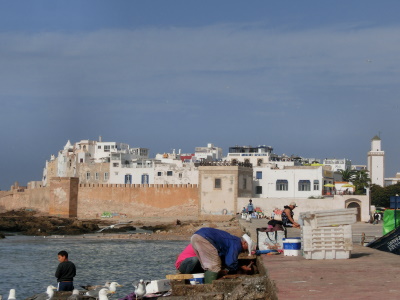



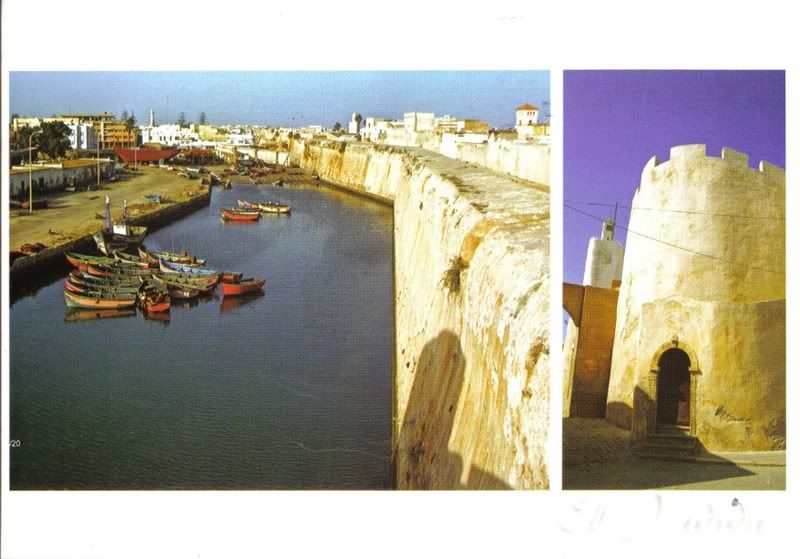

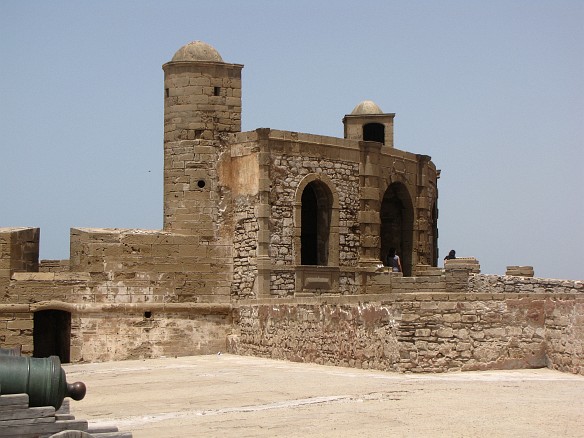

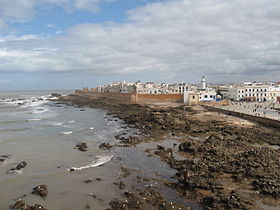




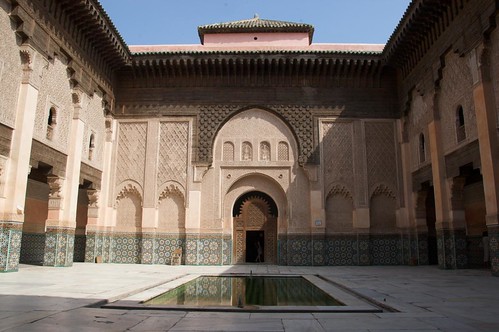
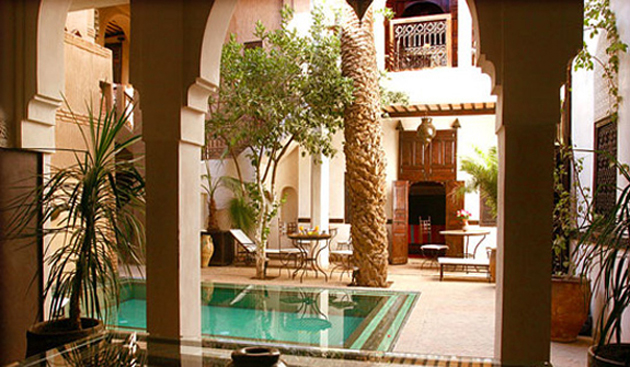




.jpg)

